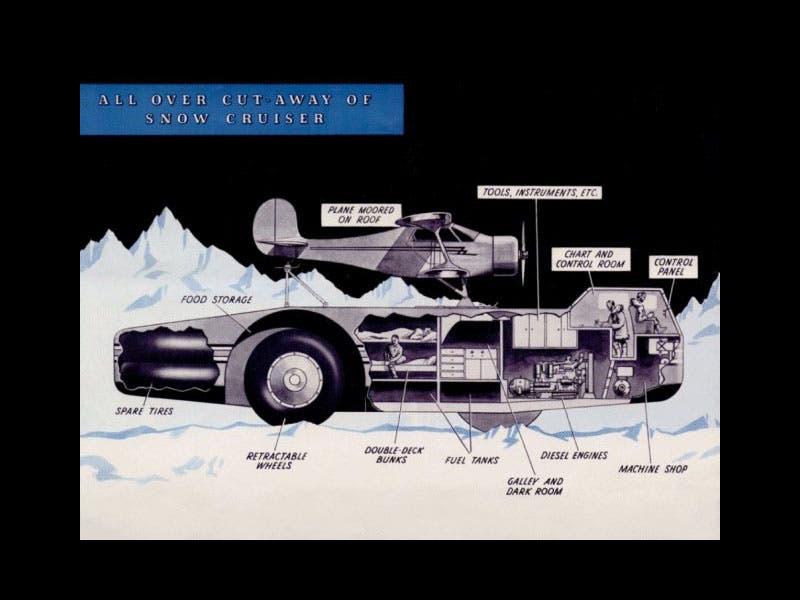Scientist of the Day - Thomas Poulter
Thomas Poulter, an American physicist and polar explorer, was born Mar. 3, 1897. Poulter accompanied Richard E. Byrd Jr. on his second and third Antarctic expeditions in 1934 and 1939. After the second expedition, Poulter agreed to design a vehicle that could maneuver on the snow-packed Antarctic continent. Working with the Pullman Corporation, Poulter designed and built the Antarctic Snow Cruiser, or Penguin 1 (first image). It was an RV for the ice, a mammoth vehicle with huge tires, large enough to house a crew of five for a year. It was 55 feet long, weighed some 75,000 pounds, and had an onboard machine shop, galley, living quarters, and space for two gigantic spare tires, as we see in a schematic cross-section (second image). You will notice that it was also intended to carry a full-size biplane about on its roof. After the Cruiser was built, it had to be driven from Chicago to the Boston Ship Yard, which was quite a series of events) (third and fourth images). There are many more photos of the construction of Penguin 1 and its first journey on the Pullman Company website.
Unfortunately, Penguin 1 was pretty much of a bust once it got to the basement of the world. It was too heavy, seriously underpowered, had poor traction, and never managed to go so much as 15 miles in its Antarctic lifetime (it was equipped to travel 5000 miles without outside assistance, so it had plenty of supplies left over). It did make a fine living quarters, even if the “mobile” attribute had disappeared from this mobile home. The whole expedition was cut short anyway, with the outbreak of the War, and Penguin 1 was left sitting in its last parking spot when everyone pulled out in 1940. It was rediscovered during the International Geophysical Year in 1957, but since then, the part of the Ross Ice Shelf on which it sat broke off and floated away; presumably Penguin 1 is now doing what penguins do best, at home on the floor of the southern sea.
Several years ago, the Lego corporation considering adding an Antarctic Snow Cruiser to its line of products, and floated the possibility on its Lego Ideas website. The proposal received only 356 votes of support, somewhat less than the 10,000 needed to get to the next stage, and is now moribund. Penguin 1, alas, had failed again (fifth image).
Dr. William B. Ashworth, Jr., Consultant for the History of Science, Linda Hall Library and Associate Professor, Department of History, University of Missouri-Kansas City. Comments or corrections are welcome; please direct to ashworthw@umkc.edu.











